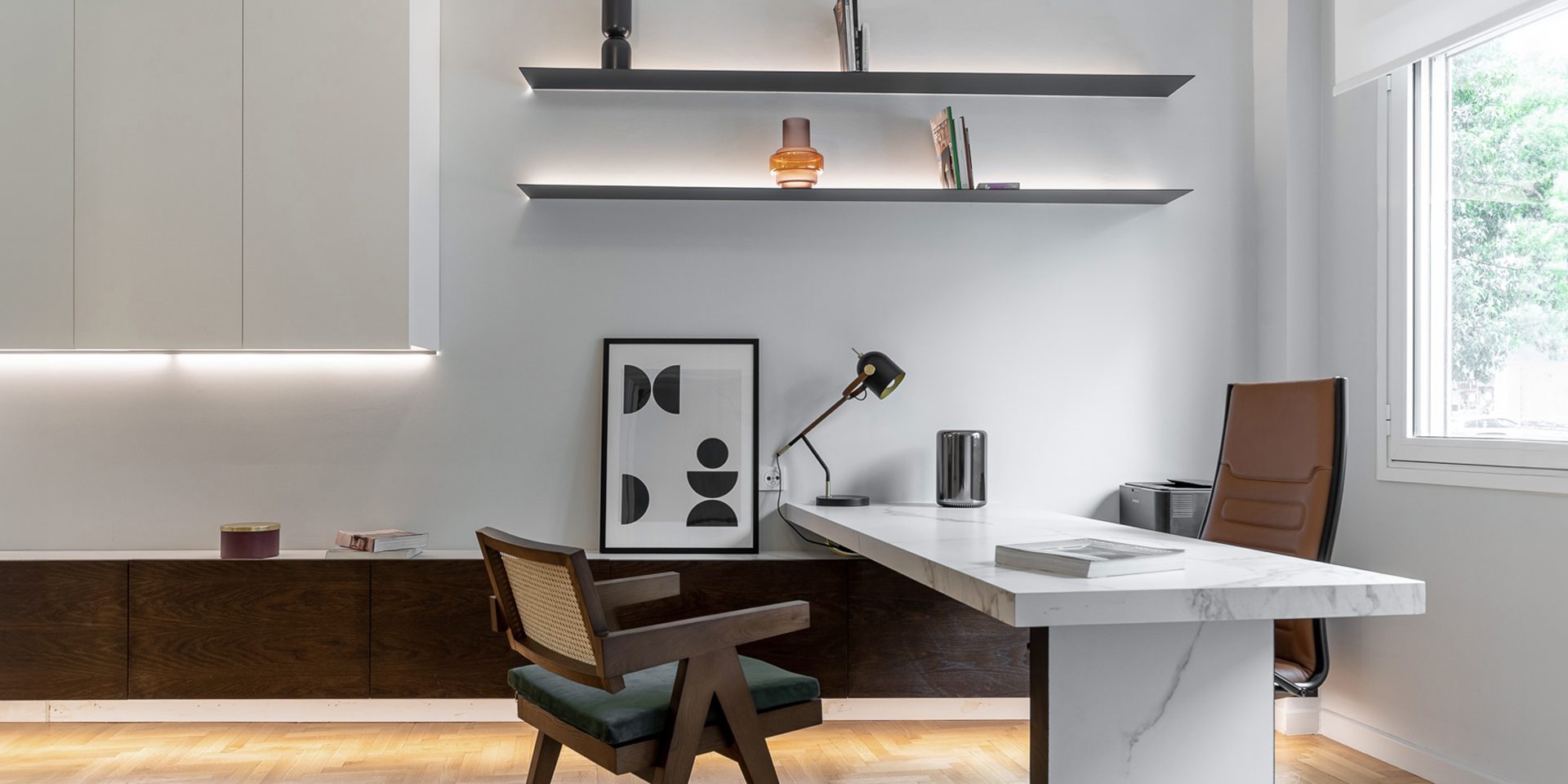Renovation of an Apartment in a 1950ies Athenian Building
The project involves the radical renovation of an 81m² ground-floor apartment in a 1950s Athenian apartment building located on Kifisias Avenue in the Ampelokipoi area. The apartment is spatially and conceptually reconfigured with the aim of creating a hybrid living space that incorporates an independent workspace while easily transforming into a professional space for 6-8 people.
Initial Layout of the Apartment
The original spatial arrangement of the apartment, primarily preserved in the new configuration, followed the classic organization patterns of post-war Athenian apartment buildings. The apartment was divided into several medium-sized rooms, separated into three zones of different levels of privacy and accessibility. In the center was the kitchen and storage, constituting the service zone, while the living room and dining area were located in front of the building’s facade, serving as common areas for guests. The private zone of the bedroom and bathroom was situated at the back. A relatively large hallway in the center of the apartment, parallel to the kitchen and storage, directed circulation either toward the communal area of the living room or to the private space of the bedroom.
Incorporation of a New Functional Program
The need to incorporate a more flexible functional program into the space, coupled with the desire to enhance natural lighting in the central area of the apartment, led to the elimination of the storage area and its integration with the kitchen space. Additionally, the removal of walls between the hallway-kitchen and storage-dining area took place. Consequently, the kitchen expands significantly to serve as both a kitchen and dining area, while the dining area transforms into an office space. These two areas are delineated by a special metal structure with glass surfaces that maintains visual continuity and ensures necessary natural light. The same glass partition defines the living room space with the hallway, eliminating the limited opening of the existing sliding door and enhancing light diffusion from the front opening of the living room.
The hallway, despite its disproportionately large size compared to other spaces, remains in the size and position of the original layout, allowing it to function satisfactorily as a reception and waiting area in case of transforming the entire apartment into a professional space. The bedroom and bathroom remain in their original positions at the back of the apartment, accessible through a “hidden” door from the hallway, providing necessary privacy to the user.
Design of Special Features
The flexibility of the space, whether as a living or office space, is further enhanced through special constructions. Apart from creating multiple storage spaces essential for both professional and residential settings, a specially designed retractable bed in the bedroom, which integrates into the wall and camouflages as an extension of the wardrobe, facilitates its conversion into a meeting room or additional office space.
Restoration of Architectural Elements
All oak floors, gypsum ceilings, and the entrance arch are preserved and restored, enhancing the aesthetics of the architectural decor of that era. Many of the furniture pieces are custom-designed for the space, using materials such as wood, metal, and marble, emphasizing functionality and the timeless character of the space.
Design of a New Kitchen
In the kitchen area, the ceiling is lowered, following a more modern design to create a contrast with the high-ceilinged spaces of the living room, office, and hallway. The green ceramic surfaces of the countertop and the custom-made dining table, resembling the green Tinos marble, dominate and give a distinctive character to the space while harmonizing with the authenticity of the materials in the other communal areas. Finally, brass details on furniture and decorative elements complement the architectural decor, adding a touch of shine and luxury.





